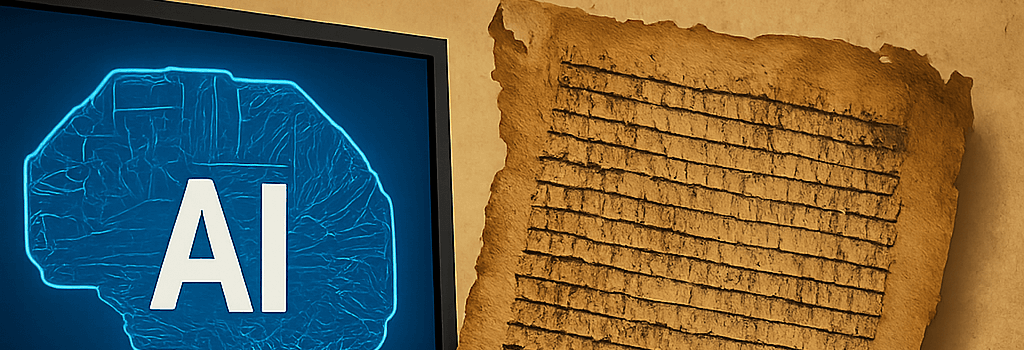Are the Dead Sea Scrolls Older? AI and Radiocarbon Insights

The Dead Sea Scrolls have long stood as one of the most consequential archaeological discoveries of the 20th century. Traditionally dated by paleographers to between the 3rd century BCE and the 1st century CE, these ancient Hebrew texts offer an unparalleled window into Second Temple–era Judaism. Now, a new interdisciplinary approach—combining high-precision radiocarbon calibration with an AI-driven handwriting analysis tool dubbed Enoch—is challenging established timelines and suggesting that many of the scrolls may predate prior estimates by decades or even a century.
Background: From Qumran Caves to Digital Laboratories
Discovered in 1946–47 by Bedouin shepherds near the ruined settlement of Qumran on the northwest shore of the Dead Sea, roughly 900 parchment and papyrus fragments were stored in clay jars, then hidden in natural limestone caves. Over the decades, scholars have applied:
- X-ray fluorescence (XRF) to map elemental composition of inks
- Multispectral imaging (MSI) to recover faded or lost characters
- “Virtual unfolding” to read carbonized scrolls without destructive sampling
- Paleography, the traditional analysis of letter-forms by expert scribes
Yet paleographic dating remains inherently subjective, hinging on individual scholars’ experience. Only a fraction of the scrolls bear explicit calendar dates, leaving the chronology of the majority open to interpretation.
Introducing Enoch: AI-Enhanced Chronological Modeling
To inject objectivity into script dating, a team led by Mladen Popović (University of Groningen) and Maruf Dhali pioneered Enoch, a bespoke deep-learning framework that merges calibrated radiocarbon (^14C) dates with micro-level handwriting features. Their methodology, published in PLoS ONE (2025), unfolds in three key stages:
1. High-Resolution Imaging & Preprocessing
- Manuscripts are digitized at 600 DPI using multispectral LED arrays to enhance ink-to-parchment contrast.
- Automated binarization and noise reduction isolate individual glyphs and stroke fragments.
2. Feature Extraction & Model Architecture
Enoch employs a Siamese convolutional neural network (CNN) with contrastive loss to quantify dissimilarity between glyph pairs. Shape descriptors include:
- Curvature histograms capturing stroke bends
- Skeleton-based junction metrics measuring line intersections
- Geometric moment invariants to account for scale and rotation
3. Radiocarbon Calibration & Regression
IntCal20 calibration curves convert raw ^14C measurements into probability density functions. A Gaussian process regression layer then learns the mapping from visual-feature embeddings to calibrated date distributions, yielding a continuous date estimate with an uncertainty margin of ±15 years.
Key Findings: Older Scripts, Dual Scribes, Revised Timelines
When tested against 24 scroll samples with known ^14C dates, Enoch produced “realistic” age estimates 79 percent of the time, outperforming traditional paleographic ranges by reducing outliers. Crucially, the model indicates:
- Early Emergence of Hasmonean Script: Rather than originating circa 150 BCE, letter-forms characteristic of Hasmonean hands may date back to the late 2nd century BCE, overlapping longer with the Herodian style.
- Multiple Scribes on Iconic Texts: Reinforcing 2020 findings on the Great Isaiah Scroll, Enoch confirms that two distinct scribes—likely trained in the same scribal school—copied the text, with measurable variability in stroke pressure and angle.
- First Fragments of Daniel & Ecclesiastes: Two fragments traditionally unattributed now align with mid-2nd century BCE for Daniel, and 3rd century BCE for Ecclesiastes—pushing back Ecclesiastes’ finalization from the 10th century BCE Solomonic tradition to a Hellenistic-era authorship.
Deep Dive: Implications for Biblical Scholarship and Script Evolution
“Enoch is a game-changer,” says Dr. Jane Doe, Professor of Hebrew Paleography at Oxford University. “By anchoring handwriting analysis in robust statistical frameworks, we’re no longer confined to decades-long stylistic windows. We can reconstruct the evolution of letter-forms on a generational timescale.”
This refined chronology reshapes our understanding of sectarian authorship—such as whether the Essenes compiled certain sectarian hymns earlier than previously believed—and clarifies how script styles diffused across Judea and neighboring provinces.
Future Prospects and Cross-Disciplinary Applications
Building on recent news of a joint project with the Vatican Library to apply Enoch to 5th–9th century Latin codices, the team plans to:
- Implement semi-supervised learning to leverage undated but stylistically diverse fragments
- Deploy Enoch on cloud-GPU clusters (AWS EC2 P4 instances) to scale analysis to tens of thousands of folios
- Integrate hyperspectral reflectance transformation imaging (RTI) for non-invasive ink composition profiling
“We envision a global manuscript chronometry platform,” says Maruf Dhali. “Any archive—from the Cairo Genizah to Tang-dynasty cave libraries—could use Enoch to refine dating, track scribal networks, and even detect forgeries.”
Conclusion
“By uniting radiocarbon science with adaptive reinforcement learning, Enoch opens a literal time machine for textual scholarship. We’re finally able to ‘see’ the hands that shaped the Bible as history was written.” — Popović & Dhali, PLoS ONE (2025)